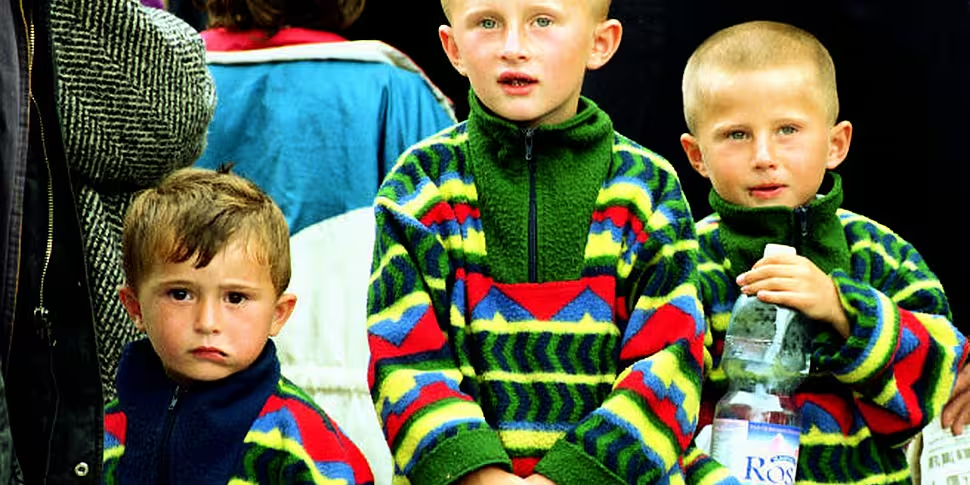In 1999 Ireland invited 1,000 Kosovar refugees to shelter here, rescuing them from grim camps on their borders of their country. The current Irish government says it will accept roughly 1,800 Syrian refugees who find themselves in a similar situation.
Jean Claude Juncker today implored European Union member states to take an additional 120,000 refugees to ease pressure on southern and eastern Europe where authorities are struggling to deal with populations fleeing violence in the home places.
At this point, Ireland has still only committed to taking some 1,100 Syrian refugees, but they have promised to take up to 1,800 more as necessary.
There has been much criticism of that response in recent weeks, most notably after an image of toddler Aylan Kurdi's dead body lying on a beach in Turkey spread around the world.
But is our response today so different to what we have done in response to other crises?
Newstalk.com took a look back at the Irish government's response on the occasion of the last major humanitarian disaster we were asked to respond to.
In 1999, echoing the enormity of the current Mediterranean crisis, the UNHCR said there were 716,000 Kosovar refugees spread across Albania, the former Yugoslav republic of Macedonia, Montenegro and Bosnia at the time.
Kosovo, a disputed territory, descended into war after conflict in Bosnia.
Between 24 March and 10 June 1999, NATO bombed Yugoslavia in order to force Serbian troops from Kosovo.
Civilians fled in their hundreds of thousands.
The Irish government sent £(IR)2.6 million to the region via Irish NGOs and UN agencies, and also contributed to a European fund for the zone.
But perhaps more importantly, they agreed to provide refuge to 1,000 people and to set up reception facilities and services for them.

Iman Sheikh Hussein Halaw, Spiritual Leader of the Muslim Community in Dublin, and Minister of State at the Department of Foreign Affairs, Liz O Donnell TD, greet the first group of Kosovar Refugees to arrive at Dublin airport in 1999. Photo: RollingNews.ie
That move came after the UNHCR triggered an emergency evacuation programme for refugee camps in Macedonia and called on Europe to accept refugees and give them temporary protection.
In words that could have been written this week, the UNHCR expressed concern about conditions in camps where the refugees were staying, with overcrowding causing tension and heavy handed management of people causing disturbances.
Irish army officers had served as part of peacekeeping forces during the Balkans crisis, so there was a familiarity with the regions' difficulties.
Some of them were seconded to the refugee agency to help with the arrival of the Kosovars.
The first Kosovars Ireland took in went to live in Millstreet, Co. Cork and Killarney, Co. Kerry in May of that year.
Subsequent arrivals sent to Kildare's barracks and Baltinglass, Co. Wicklow.
Those towns were chosen because they had accommodation that was available and suitable for large numbers of family groups.
Junior Minister for human rights Liz O'Donnell said in 1999: "The main difficulty we encountered was identifying and inspecting appropriate accommodation which had vacant possession and complied with fire safety regulations. The specific needs of refugees are well known. They need to be kept in family groups and they need to have access to local services. They also need access to the management teams associated with them for the provision of trauma counselling, psychological services, education and training."
Today we are still dealing with the same difficulties in trying to house refugees.
Then, as now, the government viewed disused army barracks as adequate accommodation to house asylum seekers.
Minister O'Donnell told the Dáil the government were even considering using mobile homes as emergency accommodation.
That is a suggestion that has yet to be tabled as the current government struggles to table proposals on how to deal with the crisis.









